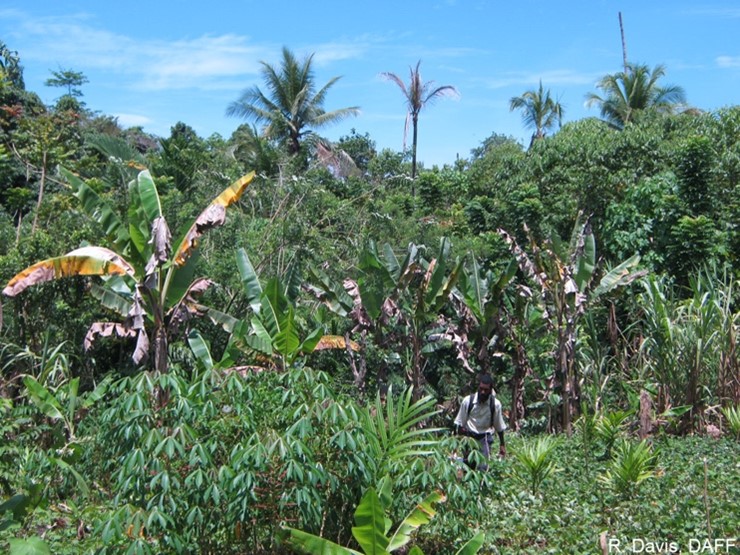PLANT PEST

Richard Davis, Department of Agriculture,
Fisheries and Forestry, Musarama
Banana phytoplasma
Exotic to Australia
Features: Bacterial diseases causing wilting and severe
losses in banana crops overseas
Where they’re from: Asia, Papua New Guinea,
Solomon Islands, Colombia
How they spread: Importation of infected plants;
local spread by sap feeding insects
At risk: Bananas, coconut
Keep it out
While some banana phytoplasmas are established in Australia several more banana phytoplasma diseases which are not present have the potential to threaten Australia’s banana industry if they were to arrive in the country.
Bacteria belonging to the genus Candidatus phytoplasma are responsible for disorders overseas in banana including banana wilt and banana elephantiasis disease. Banana phytoplasma infection has been responsible for losses of up to 70 per cent in some banana crops in Columbia.
Several species of phytoplasma have been associated with banana wilting and other diseases overseas. One species (Candidatus phytoplasma novoguineense) is present in Papua New Guinea, posing a nearby threat to Australia’s banana growing areas.
Importing goods
To keep banana phytoplasma diseases out of Australia, never ignore Australia’s strict biosecurity rules.
Import shipments may need to be treated and certified, so before you import, check our Biosecurity Import Conditions system (BICON).
What to look for
- Banana leaves that yellow slowly, wilt and die.
- When cut open, stems show discontinuous black or brown streaks and wet rot.
Where to look
Importers
Importation of infected plants is the most likely way that banana phytoplasma diseases could make it to Australia. The importation of banana plants and planting materials into Australia is prohibited, except for tissue cultures imported into approved laboratories. Banana plants, or other fresh banana plant material, must not be brought into Australia.
Home gardeners
Look for wilting banana plants with black tips on suckers.
What to do
If you think you’ve found symptoms on banana plants:
- take a photo
- do not disturb the infected plants (this may be as simple as closing the doors on a shipping container or preventing access to a part of the plantation).
